The spotlights
The spotlights
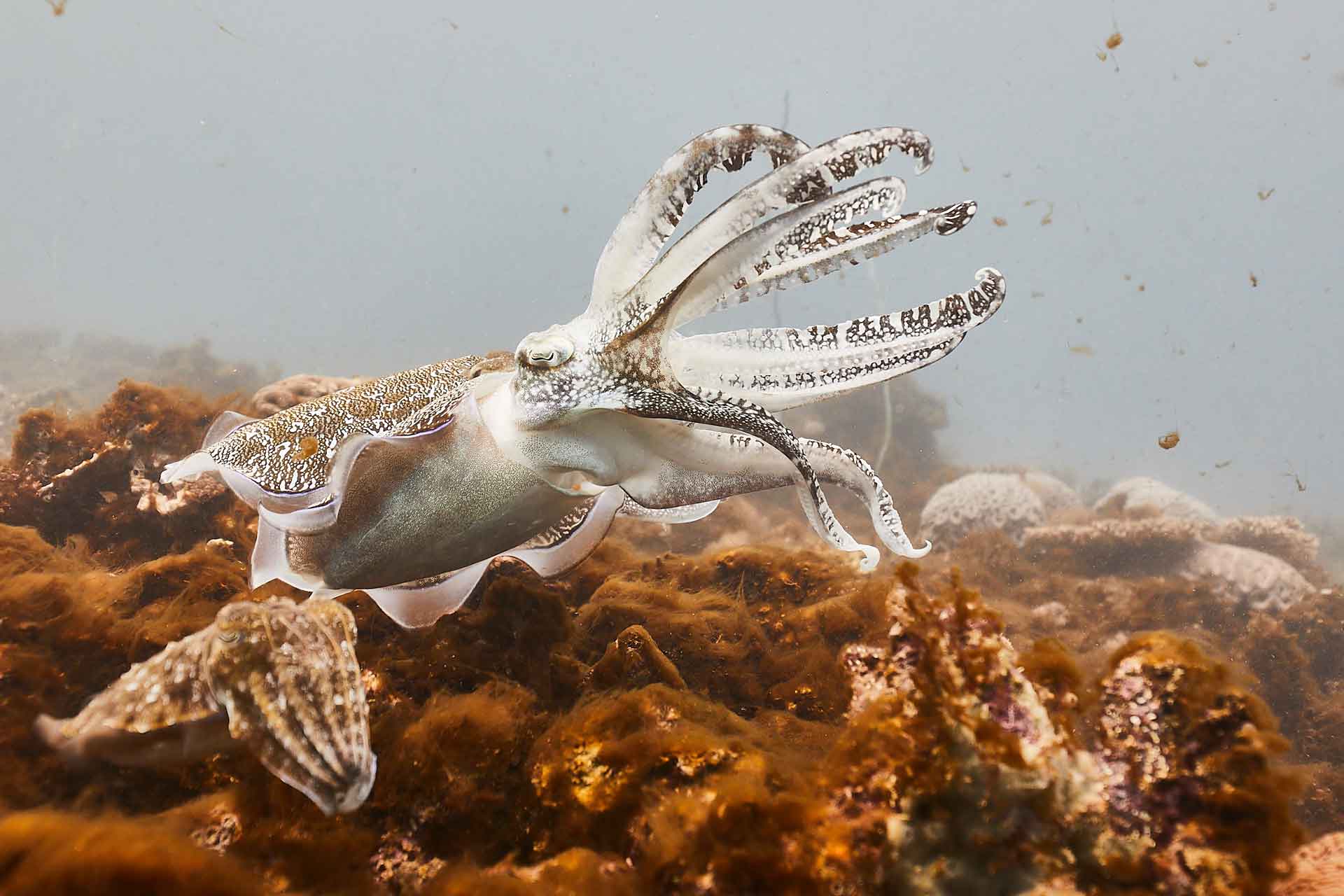
The Bénitier
A high reef mountain home to giant clams, the largest bivalve mollusc. This site is home to Ninja, a rather shy green turtle. You can also spot sept-fingers, damselfish and antennae-fish among the corals fiercely defended by damselfish.
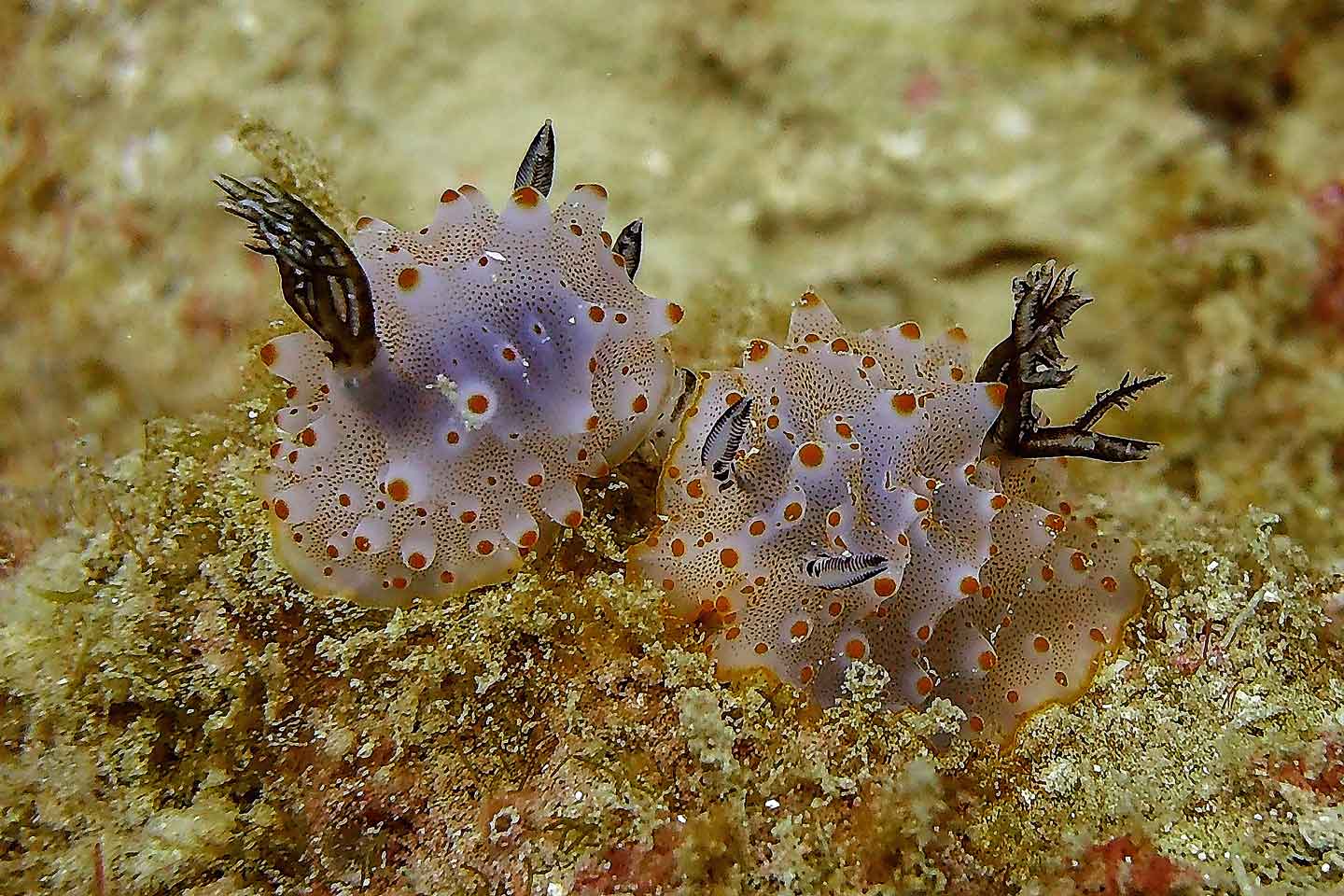
The Lighthouse
Adorned with mauve corals, this collection of small reef mountains exudes a unique atmosphere. The maximum depth is 21 metres. Watch out for nudibranchs, the main attraction of this dive.
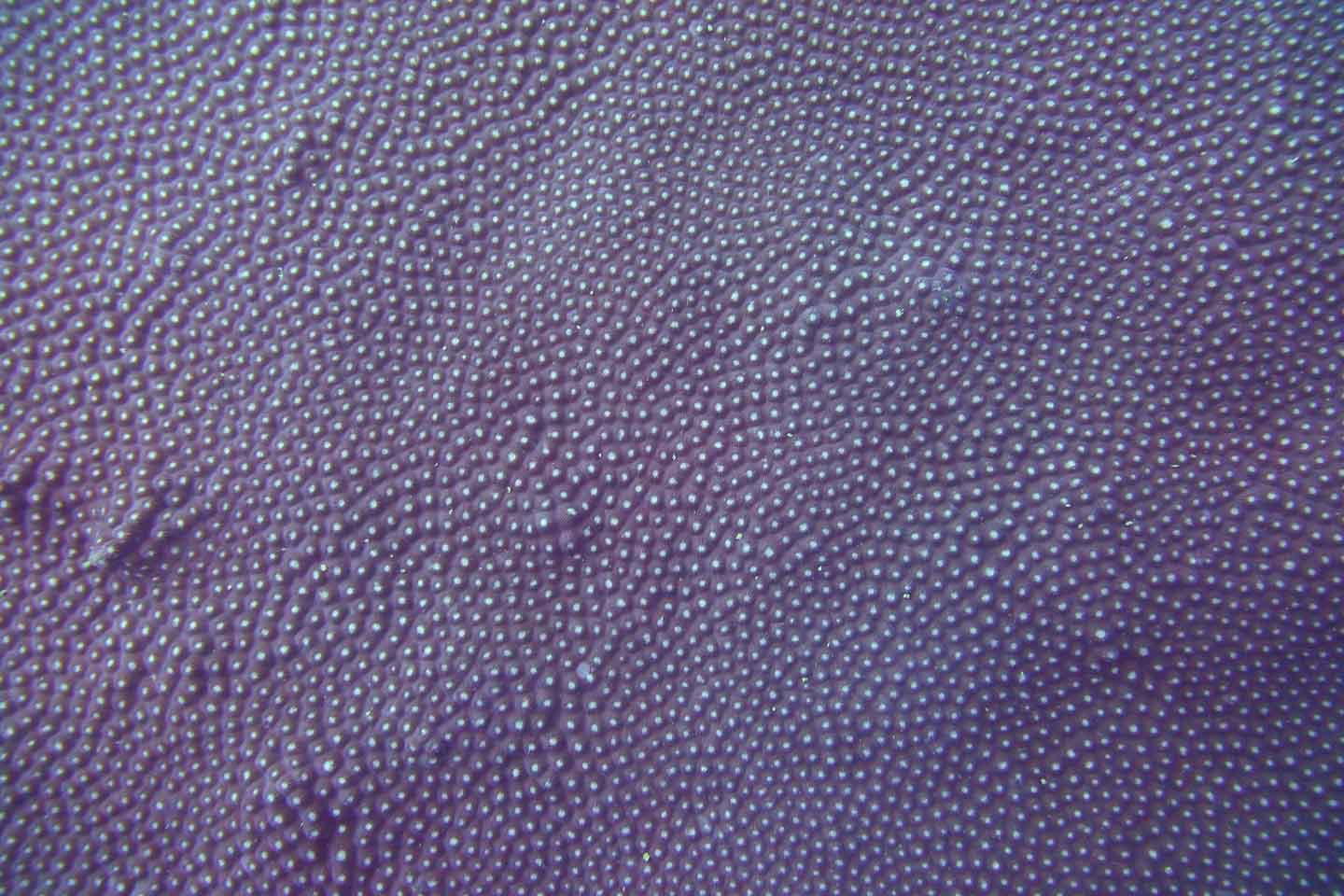
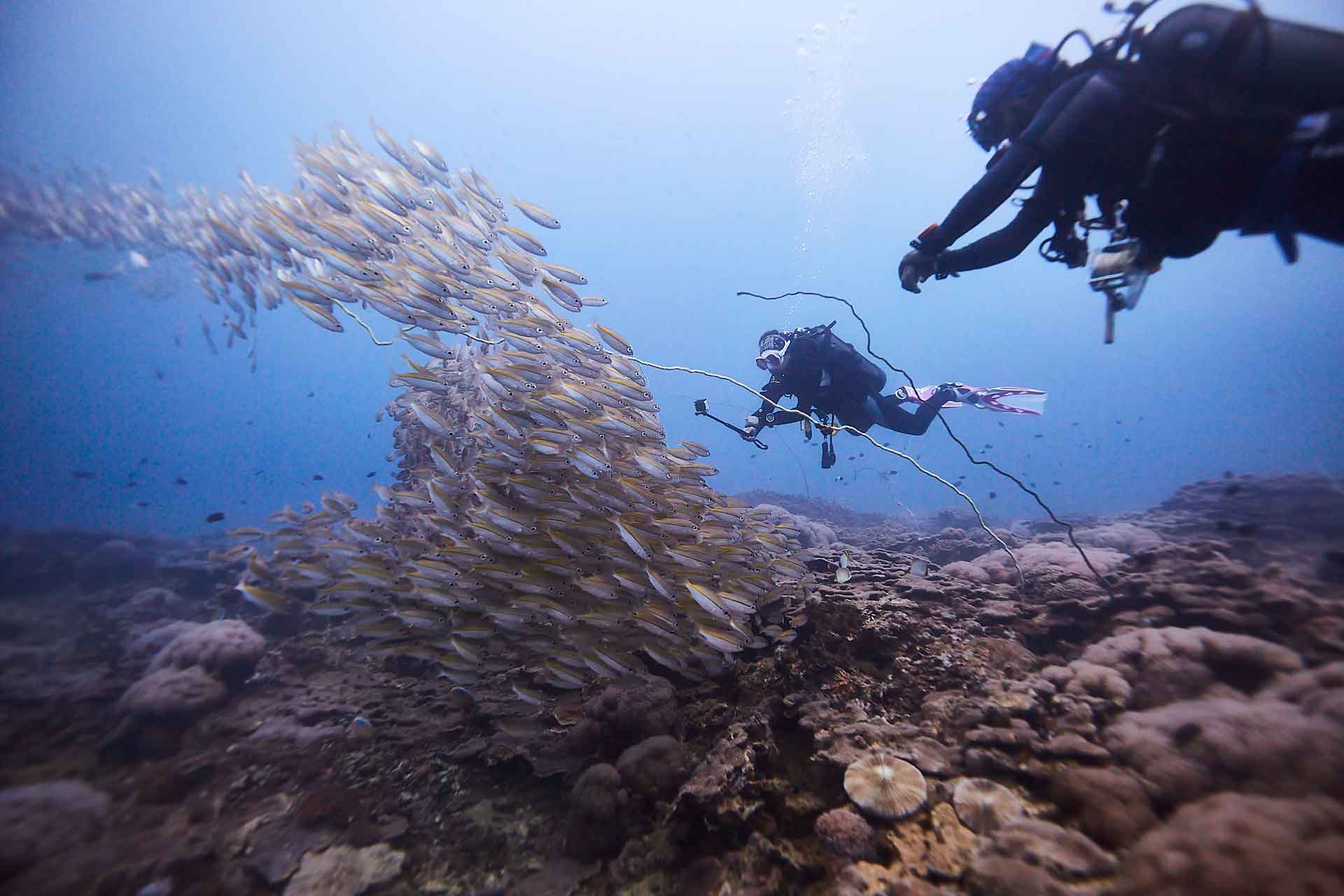
The Bubble city
The special feature of this other underwater mountain is that it is home to a multitude of bubble corals, hence its name. Hidden beneath the rocks, crocodile fish rest peacefully. Lizardfish, wrasse, groupers and other squirrelfish abound, much to the delight of observers. At the top of the hill, large shoals of fusiliers and surgeon fish decorate the scenery.
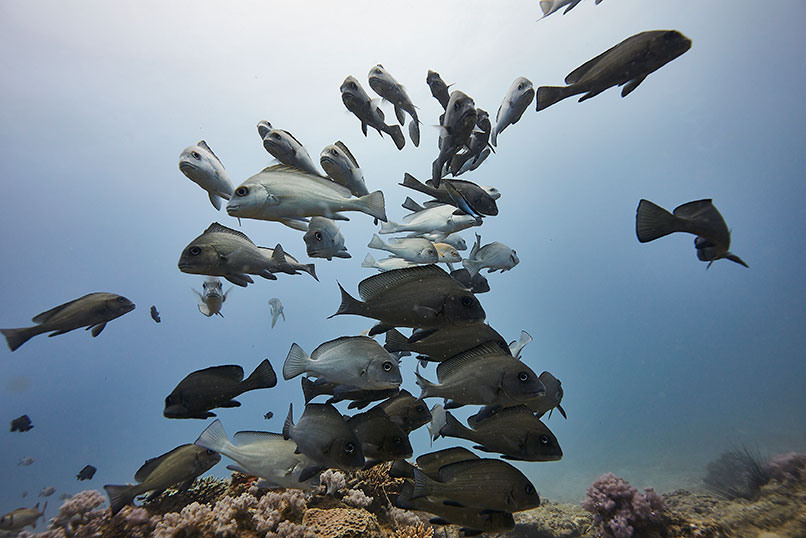
The Big Eyes
Not far from Ile aux Nattes, this shallow site (less than 20 metres deep) is made up of two hills side by side, reminiscent of the large round eyes of porcupine fish, which are easily observed here. Their cousins, the globe fish, live peacefully side by side. Keep an eye out for the occasional hawksbill turtle, octopus, flying scorpion fish and moray eel.
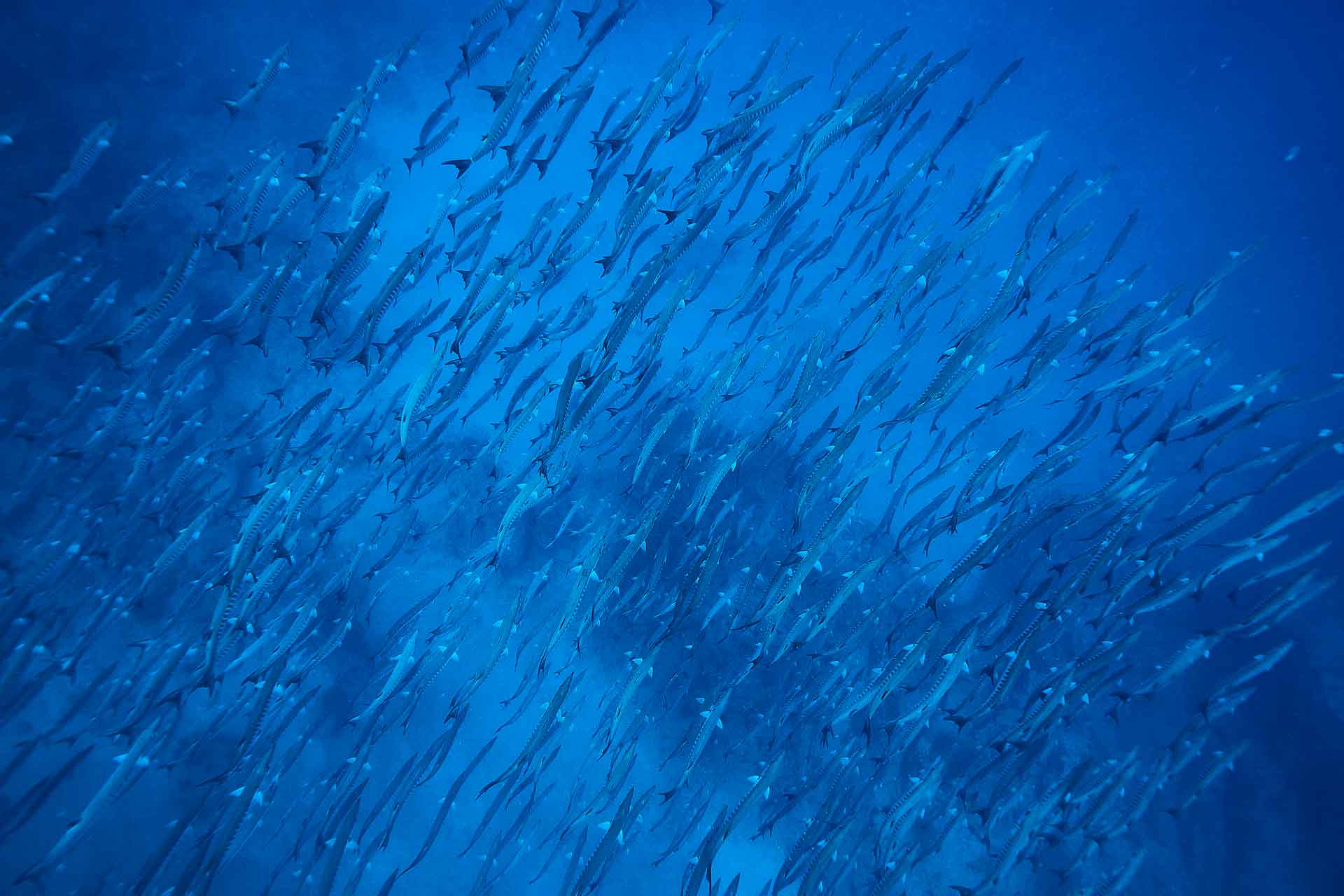
The Barracuda
Flying scorpion fish guard this site carefully. In this trio of small hills, huge lobsters hide under the rocks and octopus change colour according to the scenery. A modern-day pirate has deposited a dozen bottles, attracting small fish and predators, including the famous barracudas!
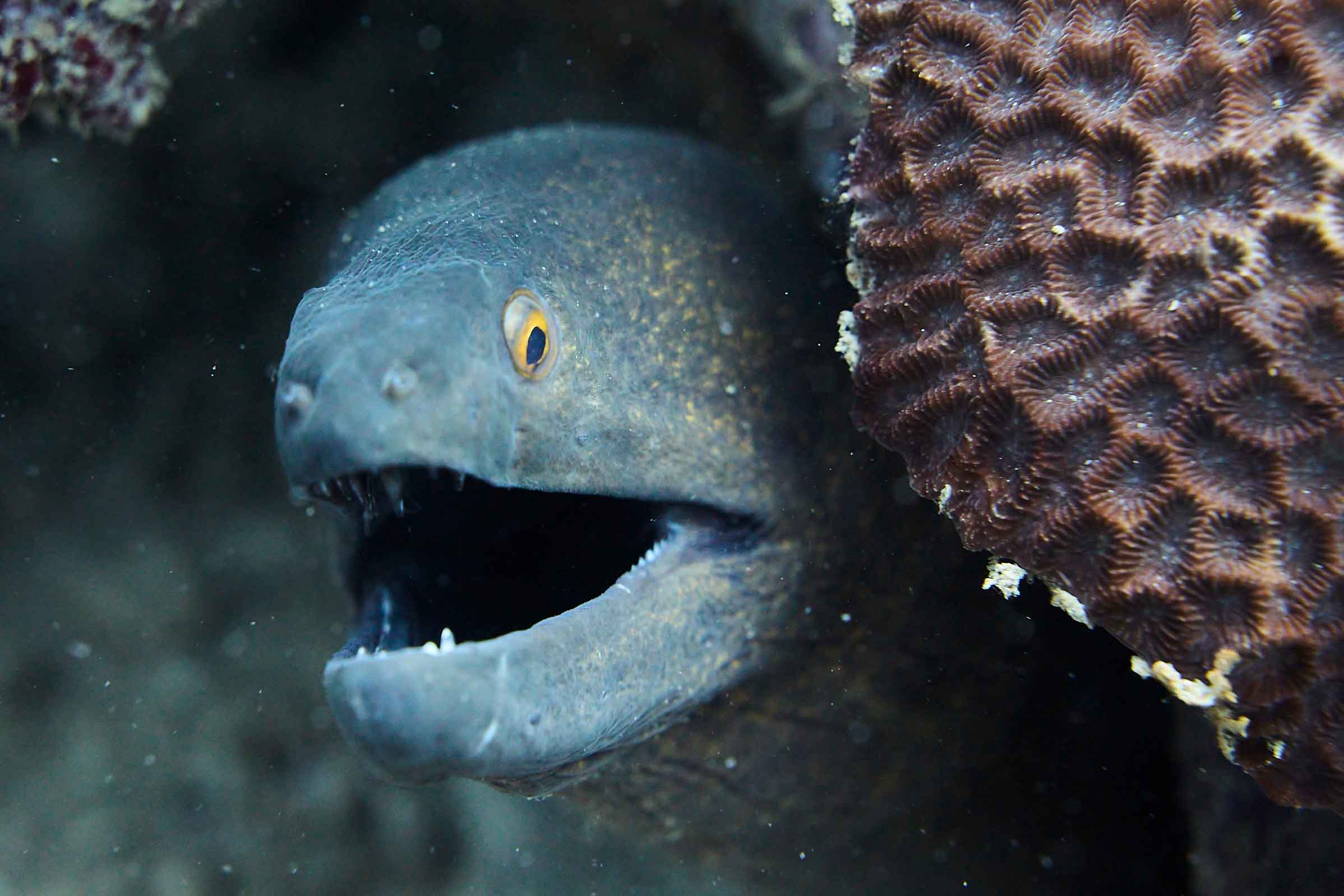
Treasure island
Close to the centre, this underwater mountain is largely covered in mushroom corals, resembling coins from a pirate’s treasure. A large marbled moray eel has taken up residence at the top. Surrounding it are green turtles, guitar rays, squid and a wide variety of nudibranchs. Schools of surgeonfish complete the picture, swimming around the maggot.
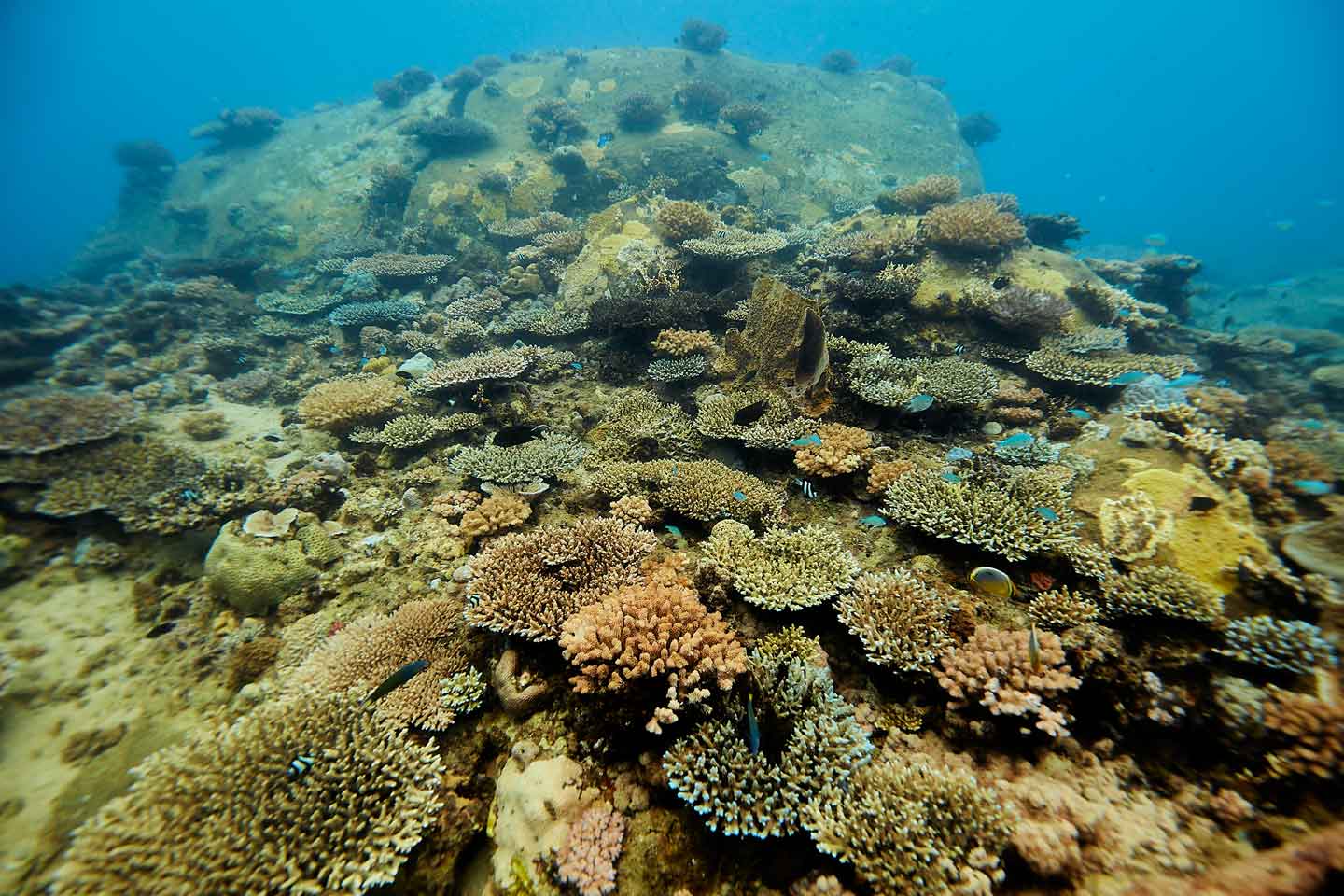
Cocobay
Set in the picturesque landscape north of Sainte-Marie, this expedition is a must. Large rocky cliffs, winding corridors and tunnels provide a sublime playground at both sites. On the programme: moray eels, globe fish, trunks, butterflies and parrots, green turtles, nudibranchs, lobsters, etc. The excursion lasts one day. Between the two dives, a home-made barbecue is organised on the verdant Cocobay site. The on-site team prepares fresh local cuisine for visitors, accompanied by coconut water and pastis.
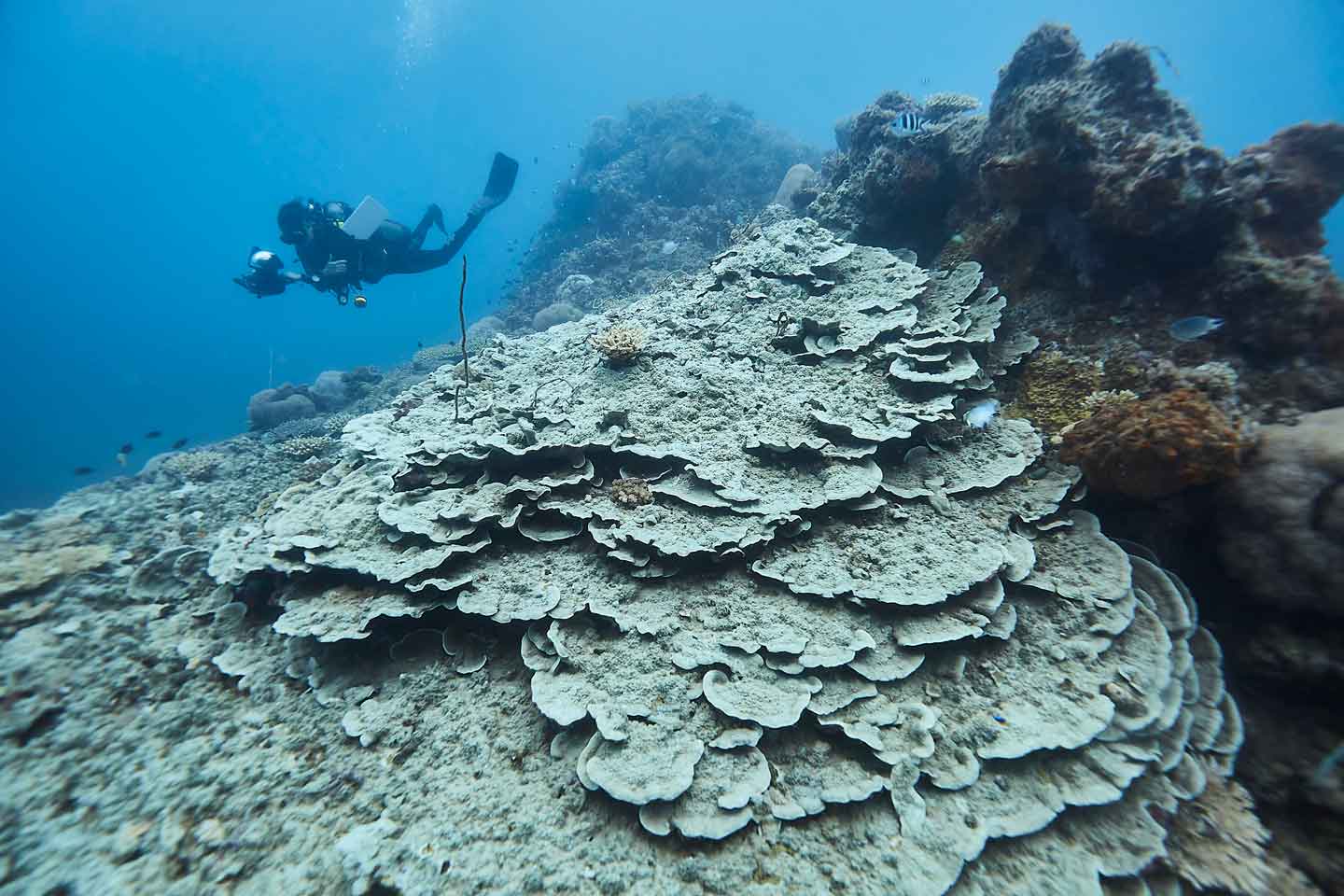
The Crique
cette plongée s’effectue après la plongée Cocobay, une fois bien désaltéré d’une noix de coco. L’une des plongées favorites de notre équipe. Un pic de roche calcaire dont la pointe se dessine à 5 mètres sous la surface. C’est là que vous effectuerez votre palier de sécurité. Mais avant cela, vous naviguerez aux alentours des 18 mètres de fond à la recherche de nudibranches et de langoustes. Au sud du pic, vous tomberez sur du corail dur en forme de chips : on l’appelle un Montipora foliacé et la taille de l’ensemble est impressionnante.
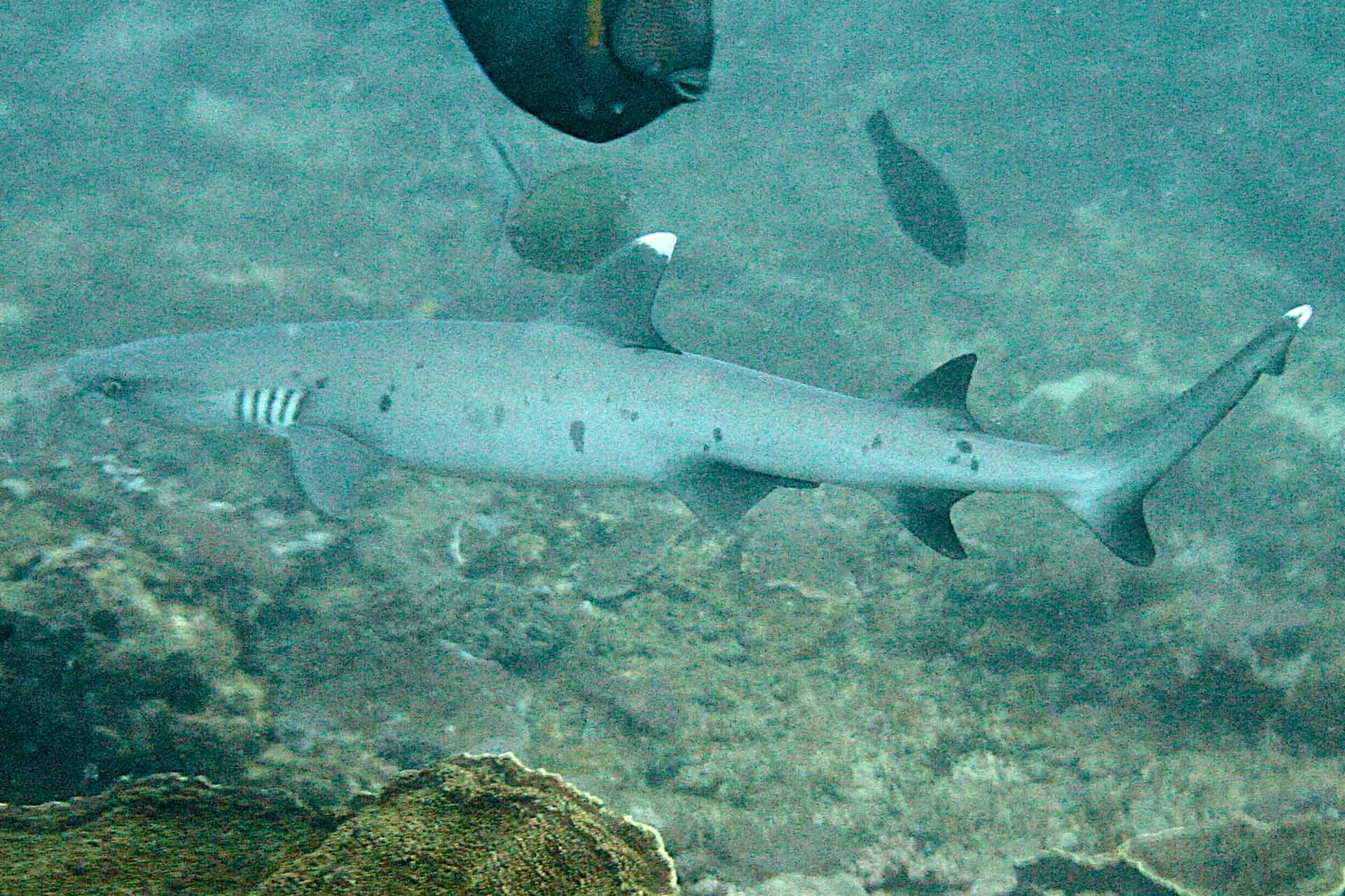
The Shark Point
As its name suggests, this site attracts thrill-seeking divers. Specimens seen here include white-tip sharks and coral sharks. Lobsters, groupers and snappers share their daily lives on these magnificent reef plateaus.
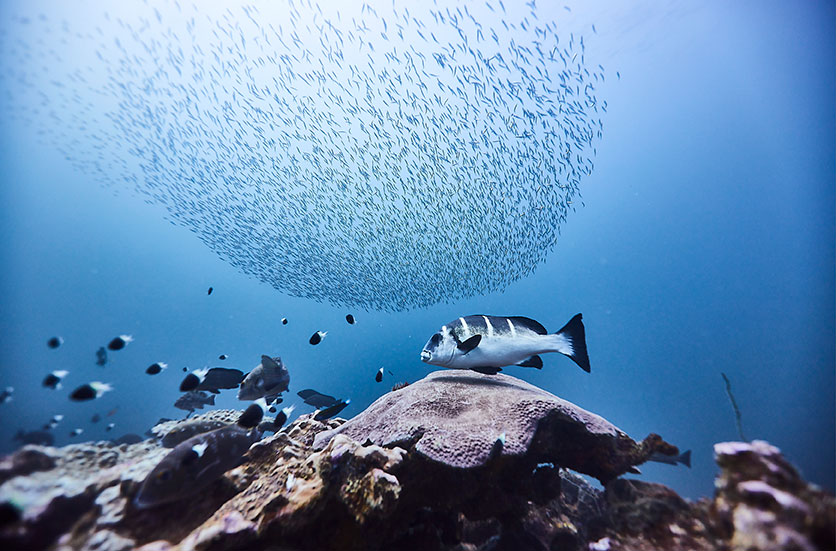
The Pic Corail
A site similar to Shark Point: a reef plateau at a depth of 26 metres home to numerous reef fish, groupers and lobsters. White-tip sharks may also be seen.
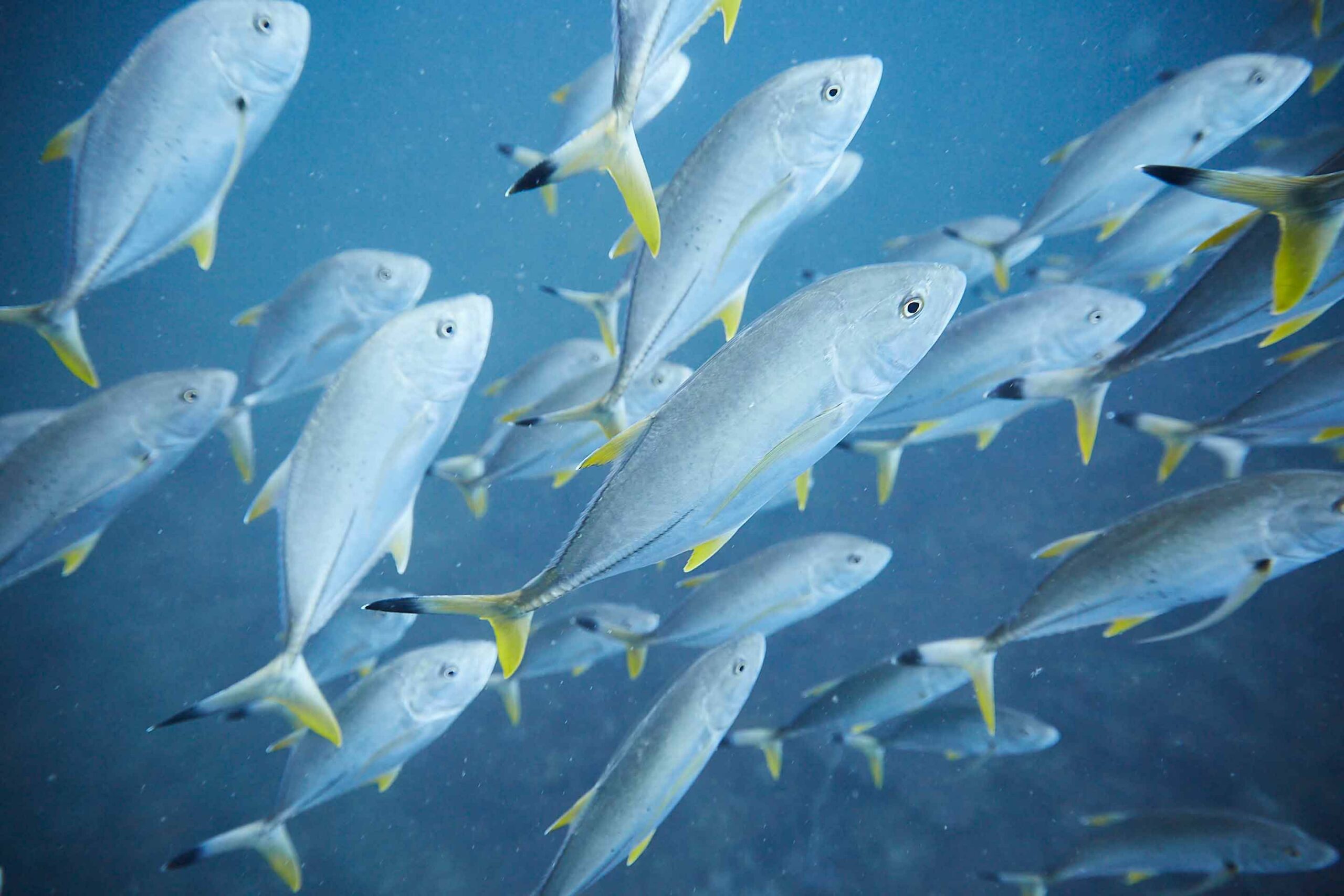
The Lyon City
Its colourful reef and rich biodiversity have given this reef plateau a great reputation on the island. Divers enjoy watching large specimens of stingrays, schools of jacks and barracudas and turtles. But the star of the site is a loche weighing over 100kg!
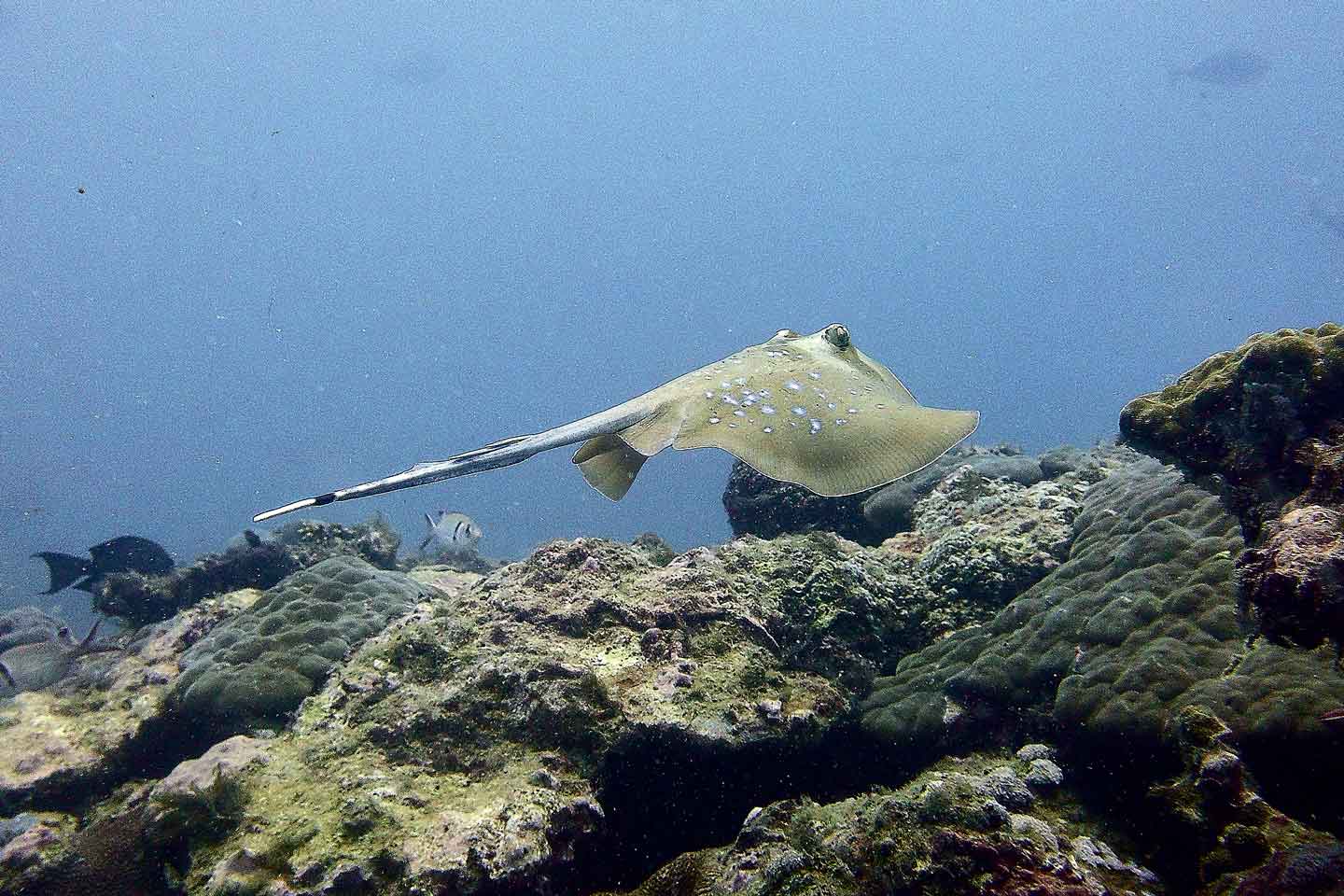
Nato island
Head for the outer lagoon, where the divers are given the task of inspecting a particularly extensive site rich in fauna: stingrays, guitarfish or torpedoes, lobsters and nudibranchs are the main occupants. For the lucky, a pair of white-tip sharks and hawksbill turtles roam the area.
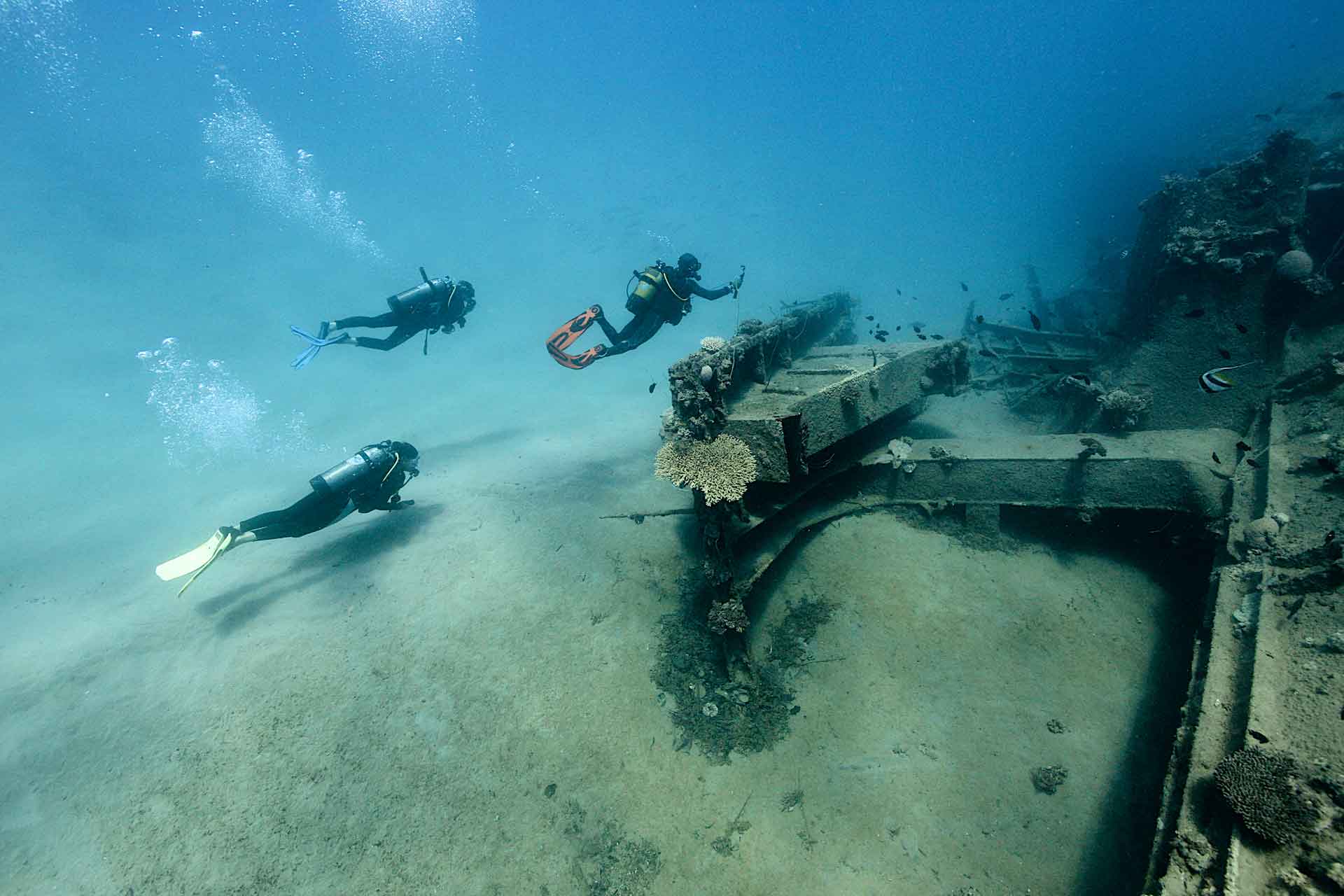
The Cocoteraie
A 50-metre wreck lies peacefully to the north of Sainte-Marie. Its former owner, Raymond Bang, deliberately sank this cable-laying boat to make it a diving site. It is a haven for jacks, lobsters, lionfish and shrimp. Level I divers can explore the outside of the vessel due to its shallow depth.
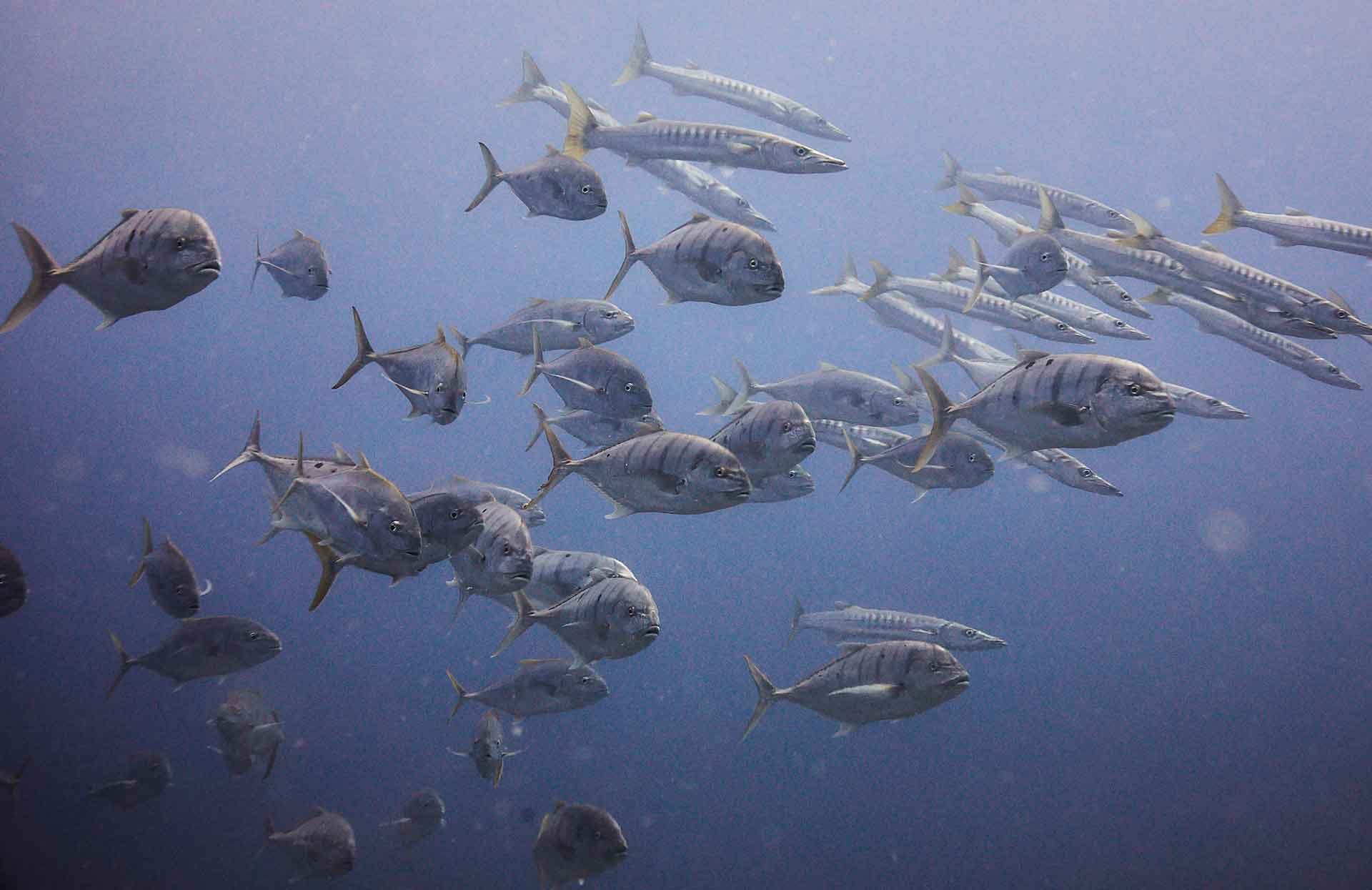
Pointe Aigle
Site exceptionnel avec une impressionnante montagne de granite de 16mètres. Avec une profondeur atteignant 30mètres, il est adapté à tous les niveaux. Explorez ses recoins où se cachent raies aigle, bancs de barracudas et de carangues, requins baleines, langoustes, vivaneaux aux gros yeux, gros mérous et grandes murènes.
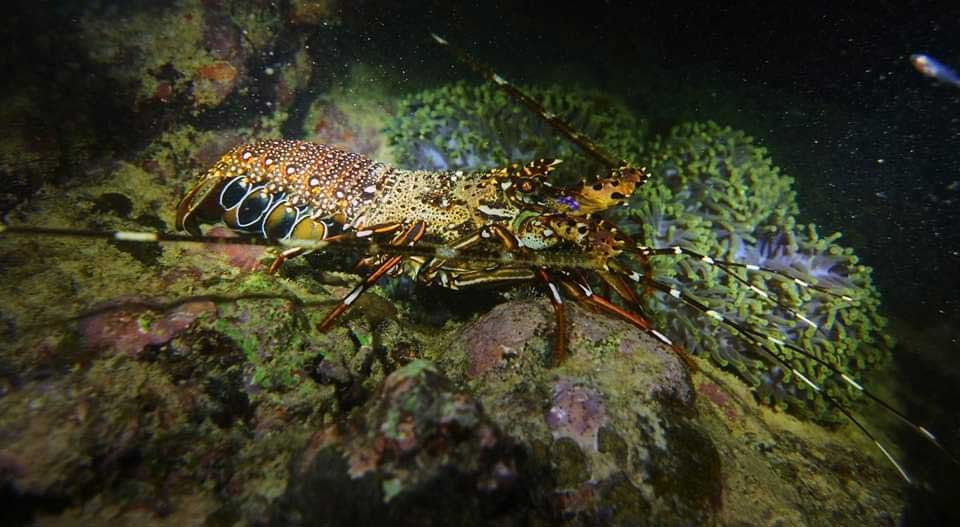
The Pagoda
A coral reef with a drop-off accessible to all levels, its depth ranges from 6m to 18 metres. This is an ideal site for night dives thanks to its wealth of nocturnal crustaceans, including lobsters, crabs and dries. During the day, you can spot turtles.
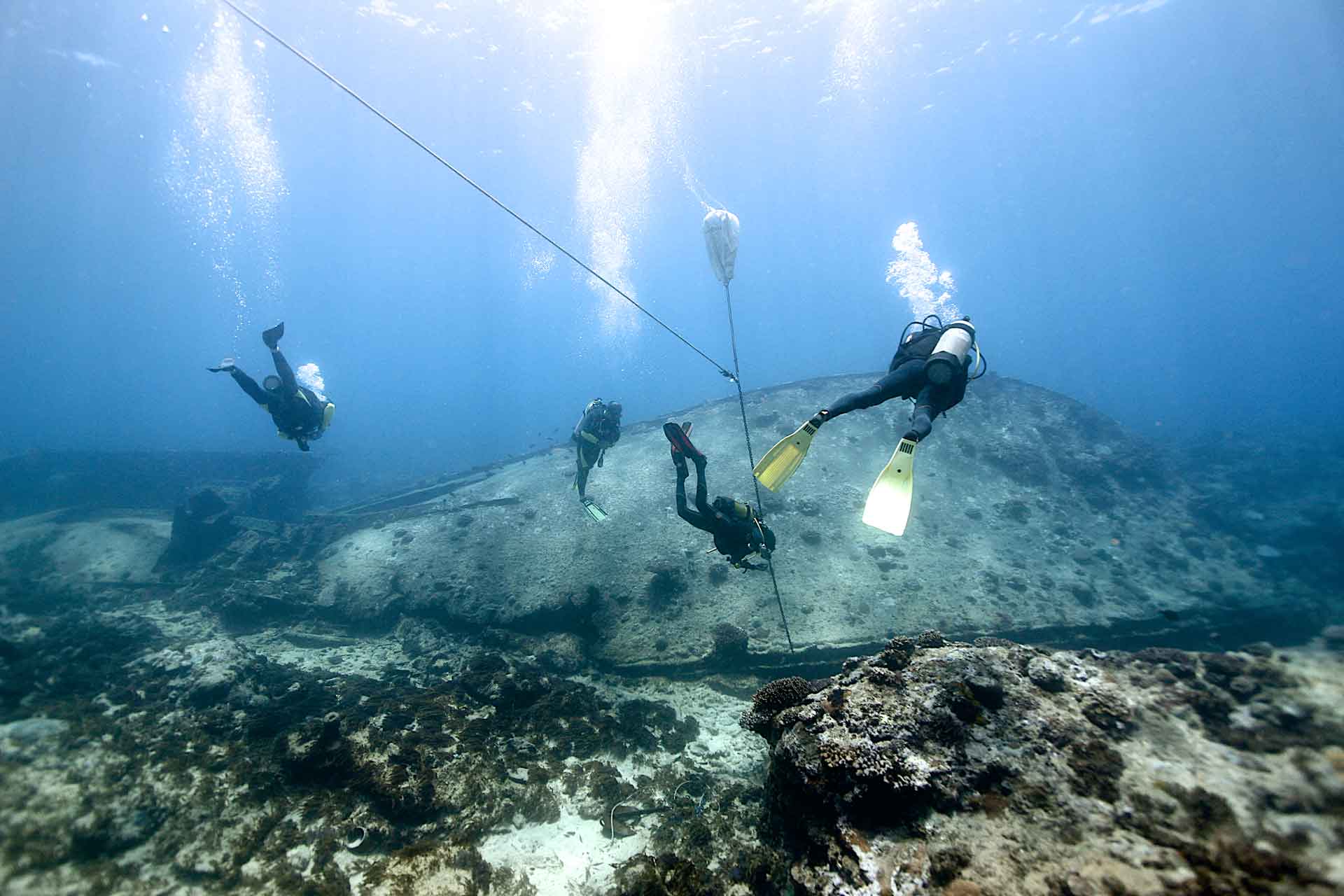
The Bateleur
Unfortunately, this small tugboat sank while trying to remove a stranded boat! The fauna and flora have gradually settled in and around the wreck, allowing many juvenile species such as fusiliers and groupers to be observed.
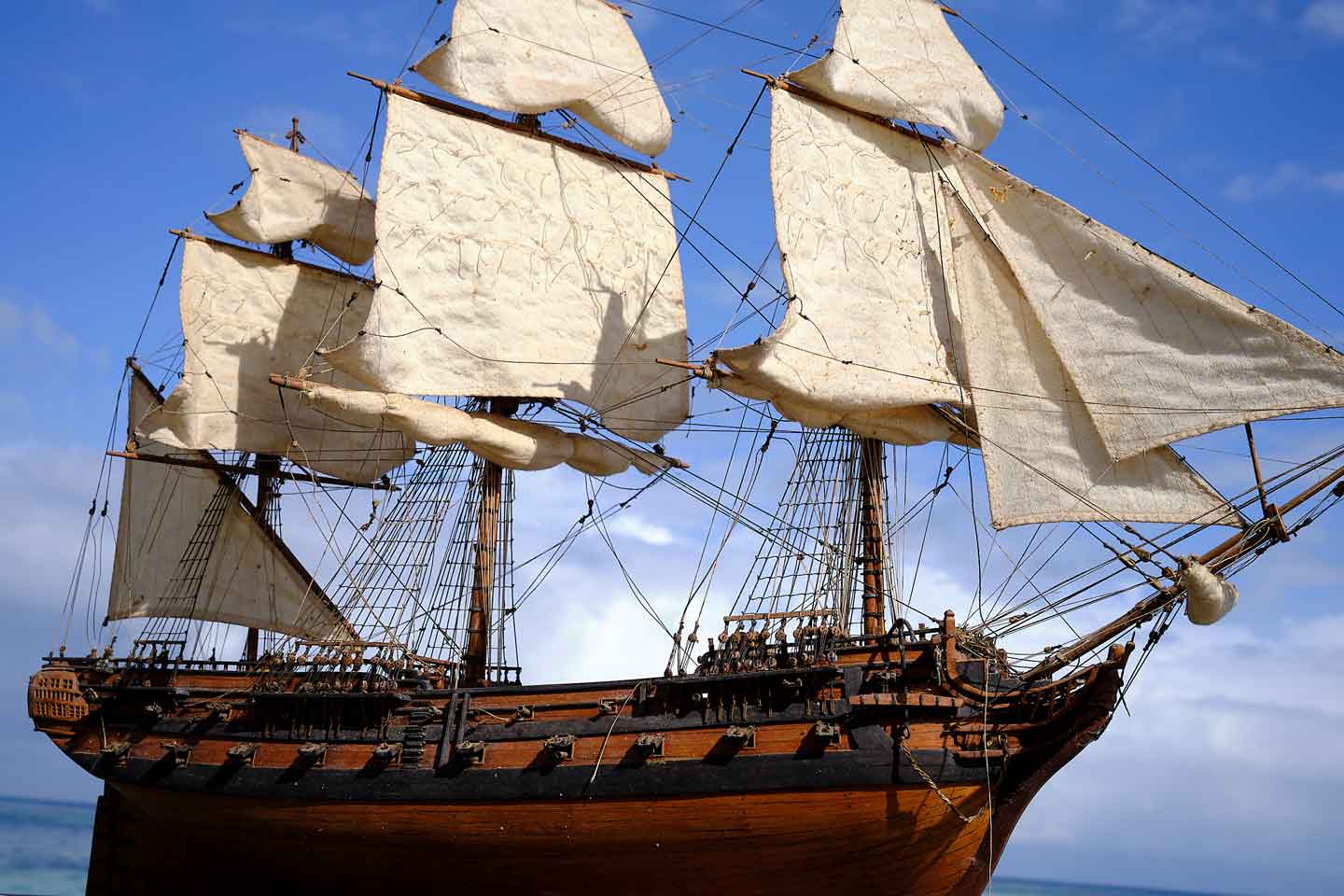
The Sérapis
Slumbering just off the coast are the remains of the ship Sérapis, which sank in 1781.The impressively large anchor marks the site of the shipwreck.Five huge cannons, a few cannonballs and rum bottles adorn the site. Marine life has developed around the relics: corals, a seahorse affectionately nicknamed Caroline, flying scorpion fish, syngnathids, globe fish, cleaner prawns and several types of shellfish.
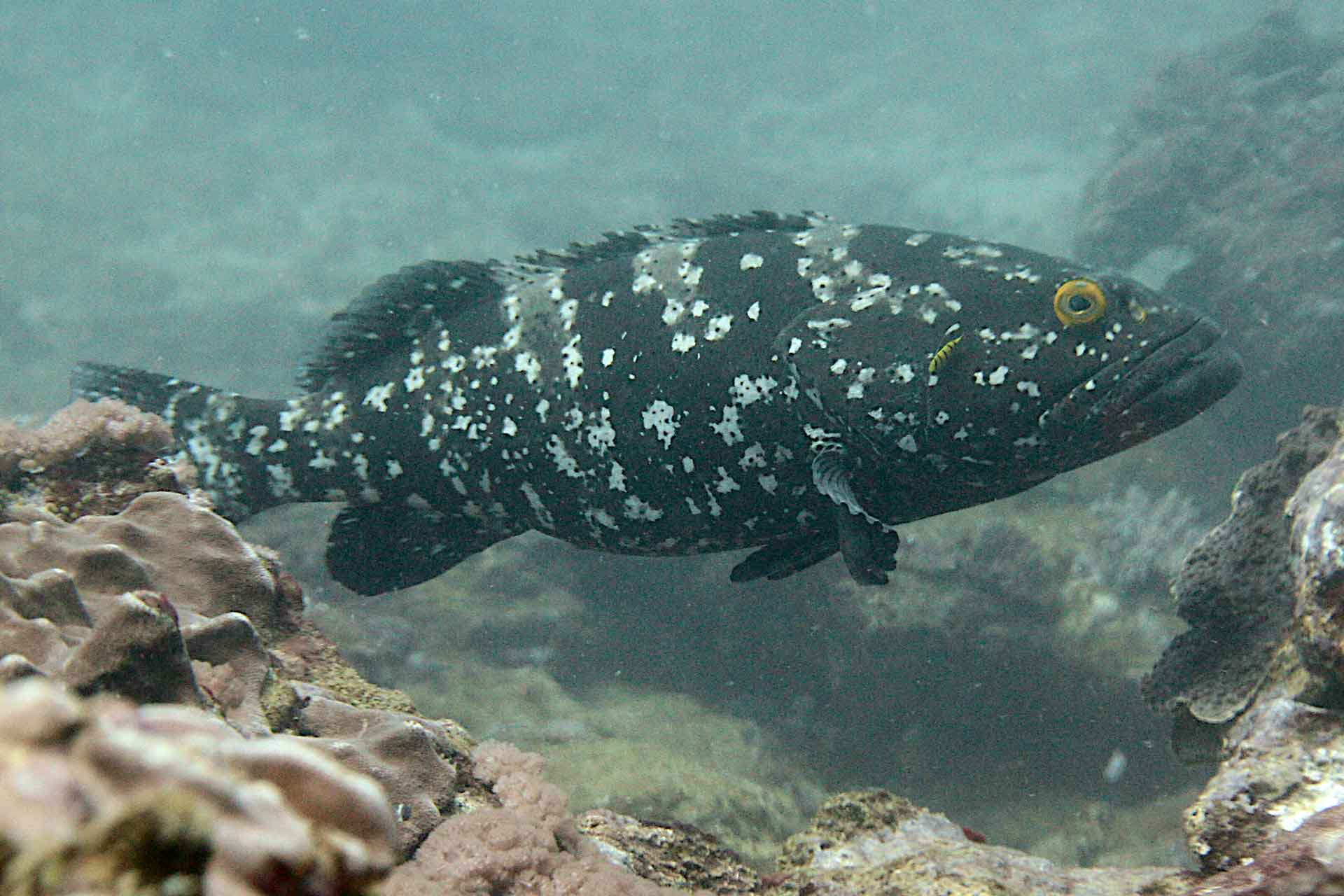
The Rays Palace
10km off the channel, the Rays Palace is the wreck of a small boat containing an astonishing diversity of fish far from the coral reef. There are large pelagic species, gigantic stingrays, schools of jacks and barracudas and the occasional eagle ray ! In this deep dive in the middle of the deep blue, groupers also make an appearance, surrounded by dancing fusiliers.
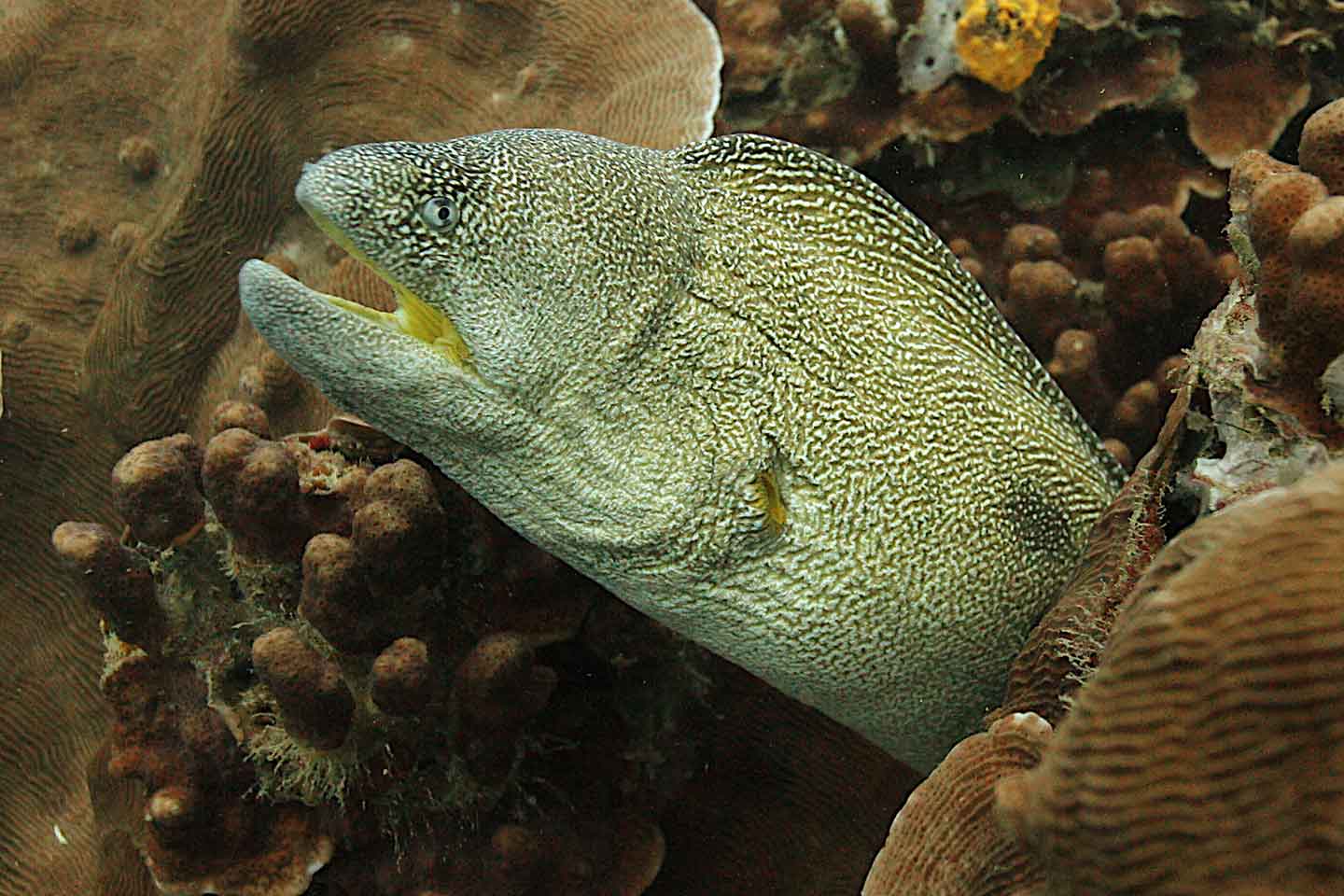
The Vivaneau
A deep dive of around 30 metres reserved for experienced divers. The main players are of course the snappers, those magnificent bright red tropical fish, and the jacks, which are also plentiful.

The Bénitier
A high reef mountain home to giant clams, the largest bivalve mollusc. This site is home to Ninja, a rather shy green turtle. You can also spot sept-fingers, damselfish and antennae-fish among the corals fiercely defended by damselfish.

The Lighthouse
Adorned with mauve corals, this collection of small reef mountains exudes a unique atmosphere. The maximum depth is 21 metres. Watch out for nudibranchs, the main attraction of this dive.


The Bubble city
The special feature of this other underwater mountain is that it is home to a multitude of bubble corals, hence its name. Hidden beneath the rocks, crocodile fish rest peacefully. Lizardfish, wrasse, groupers and other squirrelfish abound, much to the delight of observers. At the top of the hill, large shoals of fusiliers and surgeon fish decorate the scenery.

The Big Eyes
Not far from Ile aux Nattes, this shallow site (less than 20 metres deep) is made up of two hills side by side, reminiscent of the large round eyes of porcupine fish, which are easily observed here. Their cousins, the globe fish, live peacefully side by side. Keep an eye out for the occasional hawksbill turtle, octopus, flying scorpion fish and moray eel.

The Barracuda
Flying scorpion fish guard this site carefully. In this trio of small hills, huge lobsters hide under the rocks and octopus change colour according to the scenery. A modern-day pirate has deposited a dozen bottles, attracting small fish and predators, including the famous barracudas!


The Lighthouse
Adorned with mauve corals, this collection of small reef mountains exudes a unique atmosphere. The maximum depth is 21 metres. Watch out for nudibranchs, the main attraction of this dive.

The Bénitier
A high reef mountain home to giant clams, the largest bivalve mollusc. This site is home to Ninja, a rather shy green turtle. You can also spot sept-fingers, damselfish and antennae-fish among the corals fiercely defended by damselfish.

The Vivaneau
A deep dive of around 30 metres reserved for experienced divers. The main players are of course the snappers, those magnificent bright red tropical fish, and the jacks, which are also plentiful.

The Rays Palace
10km off the channel, the Rays Palace is the wreck of a small boat containing an astonishing diversity of fish far from the coral reef. There are large pelagic species, gigantic stingrays, schools of jacks and barracudas and the occasional eagle ray ! In this deep dive in the middle of the deep blue, groupers also make an appearance, surrounded by dancing fusiliers.

The Sérapis
Slumbering just off the coast are the remains of the ship Sérapis, which sank in 1781.The impressively large anchor marks the site of the shipwreck.Five huge cannons, a few cannonballs and rum bottles adorn the site. Marine life has developed around the relics: corals, a seahorse affectionately nicknamed Caroline, flying scorpion fish, syngnathids, globe fish, cleaner prawns and several types of shellfish.

The Bateleur
Unfortunately, this small tugboat sank while trying to remove a stranded boat! The fauna and flora have gradually settled in and around the wreck, allowing many juvenile species such as fusiliers and groupers to be observed.

The Pagoda
A coral reef with a drop-off accessible to all levels, its depth ranges from 6m to 18 metres. This is an ideal site for night dives thanks to its wealth of nocturnal crustaceans, including lobsters, crabs and dries. During the day, you can spot turtles.

Pointe Aigle
Site exceptionnel avec une impressionnante montagne de granite de 16mètres. Avec une profondeur atteignant 30mètres, il est adapté à tous les niveaux. Explorez ses recoins où se cachent raies aigle, bancs de barracudas et de carangues, requins baleines, langoustes, vivaneaux aux gros yeux, gros mérous et grandes murènes.

The Cocoteraie
A 50-metre wreck lies peacefully to the north of Sainte-Marie. Its former owner, Raymond Bang, deliberately sank this cable-laying boat to make it a diving site. It is a haven for jacks, lobsters, lionfish and shrimp. Level I divers can explore the outside of the vessel due to its shallow depth.

Nato island
Head for the outer lagoon, where the divers are given the task of inspecting a particularly extensive site rich in fauna: stingrays, guitarfish or torpedoes, lobsters and nudibranchs are the main occupants. For the lucky, a pair of white-tip sharks and hawksbill turtles roam the area.

The Lyon City
Its colourful reef and rich biodiversity have given this reef plateau a great reputation on the island. Divers enjoy watching large specimens of stingrays, schools of jacks and barracudas and turtles. But the star of the site is a loche weighing over 100kg!

The Pic Corail
A site similar to Shark Point: a reef plateau at a depth of 26 metres home to numerous reef fish, groupers and lobsters. White-tip sharks may also be seen.

The Shark Point
As its name suggests, this site attracts thrill-seeking divers. Specimens seen here include white-tip sharks and coral sharks. Lobsters, groupers and snappers share their daily lives on these magnificent reef plateaus.

The Crique
cette plongée s’effectue après la plongée Cocobay, une fois bien désaltéré d’une noix de coco. L’une des plongées favorites de notre équipe. Un pic de roche calcaire dont la pointe se dessine à 5 mètres sous la surface. C’est là que vous effectuerez votre palier de sécurité. Mais avant cela, vous naviguerez aux alentours des 18 mètres de fond à la recherche de nudibranches et de langoustes. Au sud du pic, vous tomberez sur du corail dur en forme de chips : on l’appelle un Montipora foliacé et la taille de l’ensemble est impressionnante.

Cocobay
Set in the picturesque landscape north of Sainte-Marie, this expedition is a must. Large rocky cliffs, winding corridors and tunnels provide a sublime playground at both sites. On the programme: moray eels, globe fish, trunks, butterflies and parrots, green turtles, nudibranchs, lobsters, etc. The excursion lasts one day. Between the two dives, a home-made barbecue is organised on the verdant Cocobay site. The on-site team prepares fresh local cuisine for visitors, accompanied by coconut water and pastis.

Treasure island
Close to the centre, this underwater mountain is largely covered in mushroom corals, resembling coins from a pirate’s treasure. A large marbled moray eel has taken up residence at the top. Surrounding it are green turtles, guitar rays, squid and a wide variety of nudibranchs. Schools of surgeonfish complete the picture, swimming around the maggot.

The Barracuda
Flying scorpion fish guard this site carefully. In this trio of small hills, huge lobsters hide under the rocks and octopus change colour according to the scenery. A modern-day pirate has deposited a dozen bottles, attracting small fish and predators, including the famous barracudas!

The Big Eyes
Not far from Ile aux Nattes, this shallow site (less than 20 metres deep) is made up of two hills side by side, reminiscent of the large round eyes of porcupine fish, which are easily observed here. Their cousins, the globe fish, live peacefully side by side. Keep an eye out for the occasional hawksbill turtle, octopus, flying scorpion fish and moray eel.

The Bubble city
The special feature of this other underwater mountain is that it is home to a multitude of bubble corals, hence its name. Hidden beneath the rocks, crocodile fish rest peacefully. Lizardfish, wrasse, groupers and other squirrelfish abound, much to the delight of observers. At the top of the hill, large shoals of fusiliers and surgeon fish decorate the scenery.

